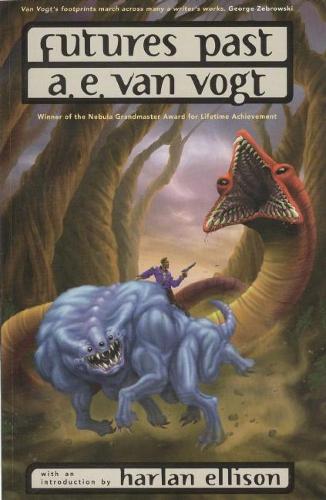
Futures Past
(Paperback, Reprint)
Publishing Details
Futures Past
By (Author) A. E. Van Vogt
Introduction by Harlan Ellison
Tachyon Publications
Tachyon Publications
15th October 1999
Reprint
United States
Classifications
General
Fiction
Short stories
813.54
Physical Properties
Paperback
203
Width 152mm, Height 215mm
298g
Description
At the forefront of the Golden Age of science fiction, A. E. van Vogt shaped the direction of modern science fiction. At a time when such writers as Isaac Asimov, Robert Heinlein, Theodore Sturgeon, Eric Frank Russell, and Lester Del Rey began to hit their stride, van Vogt was the genres most popular author. The raw emotive power of these stories defy their pulp origins and remain classics in the SF field.
The last survivor of a spaceship that crash lands on Mars finds a deserted Martian village. Natives of the Andes Mountains are able to survive in the thin atmosphere of Mars without pressure suits, to the great resentment of those born at sea level. A human and an ezwal, a large, blue, three-eyed being with the power of telepathic communication, crash land on a jungle planet and are forced to cooperate with each other to stay alivedespite the fact that the ezwal hates humans and would just as soon tear the human into little pieces. A creature, actually the galaxys greatest mathematician, is held in a huge vault on Mars that is made of ultimate metal and whose time-lock is keyed to the ultimate prime number.
Author Bio
A. E. van Vogt is considered a key author in John W. Campbell, Jr.'s Golden Age of science fiction. His best known novels include Slan and The World of Null-A. Van Vogt's science fiction career began with the short story, "Black Destroyer," published in Astounding Science Fiction in 1939. "Black Destroyer" remained one of his most popular stories, and has been cited as a source for the film Alien. In 1996, he received the Grand Master Award from the Science Fiction and Fantasy Writers of America. Along with John W. Campbell, Jr., Hugo Gernsback, and Jack Williamson, the Science Fiction and Fantasy Hall of Fame included van Vogt among its initial inductees.
